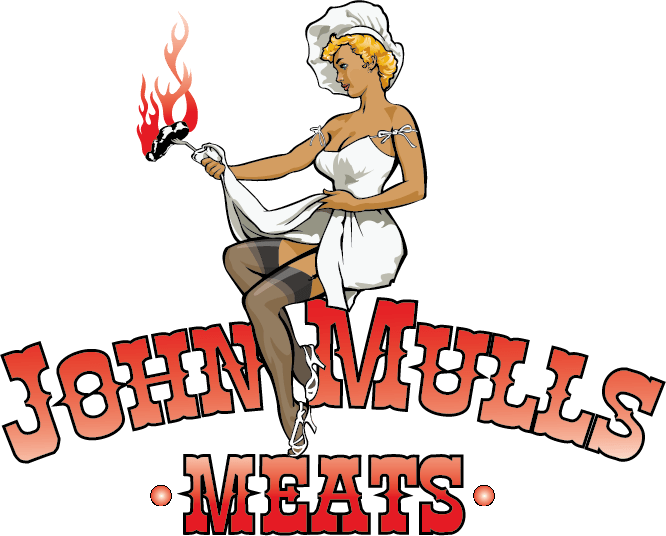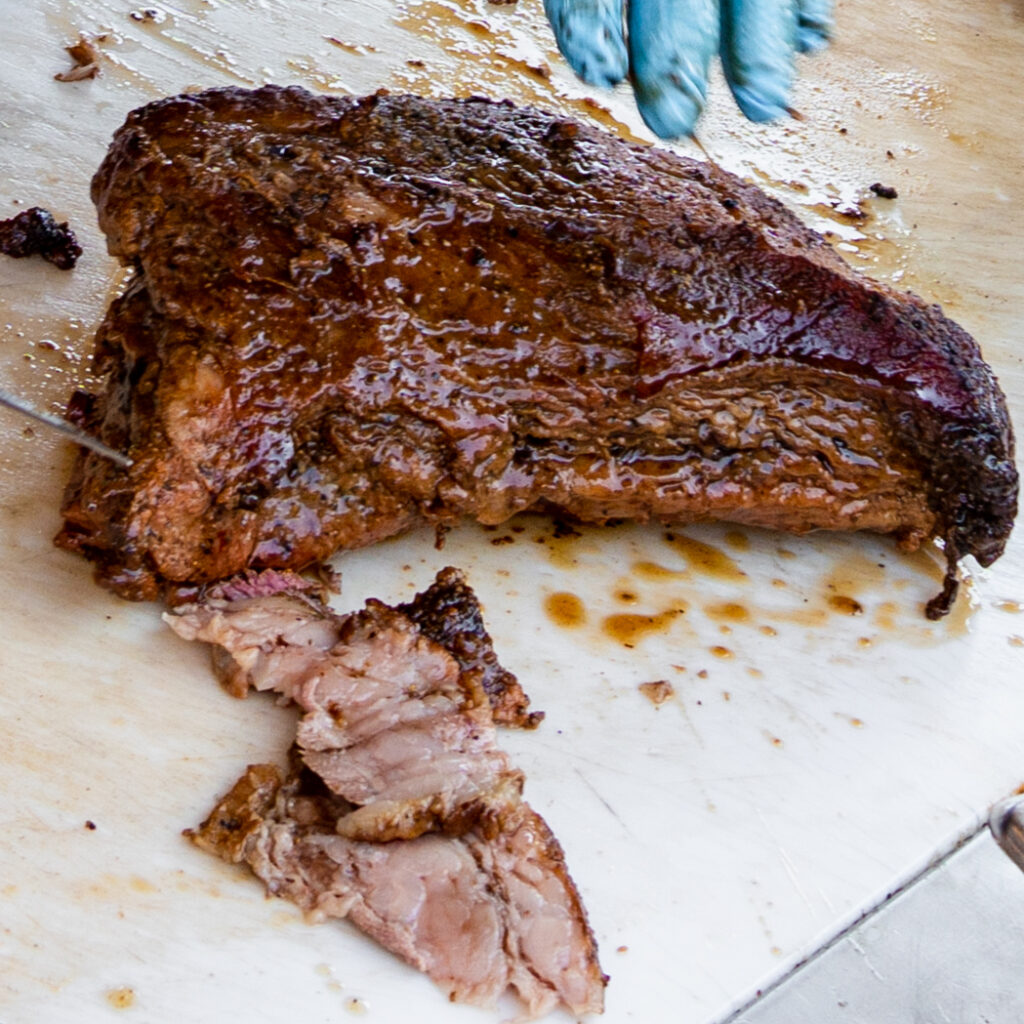Smoking meat is an art form that requires patience, the right temperature, and perfect timing. Whether you are cooking brisket, ribs, pulled pork, or chicken, knowing how long to smoke meat is key to tender, flavorful, and juicy BBQ.
At John Mulls Road Kill Grill, we have spent years perfecting the low and slow smoking technique, ensuring that every bite is packed with rich, smoky flavor. In this guide, we will break down how long you should smoke different meats, what temperatures to use, and tips for achieving slow-cooked perfection.

1. The Basics of Smoking Meat
What Is Low and Slow Cooking?
Low temperature (225°F to 275°F) – Prevents drying out and allows connective tissues to break down.
Slow cooking time (4 to 16 hours, depending on the cut) – Ensures meat becomes tender and absorbs smoky flavors.
Indirect heat and wood smoke – Creates the perfect balance of flavor, moisture, and tenderness.
Pro Tip: The key to great BBQ is low and slow cooking with consistent temperature control.
2. How Long Should You Smoke Different Meats?
Brisket – The King of BBQ
Time: 12 to 16 hours
Temperature: 225°F to 250°F
Internal Temp: 203°F for ultimate tenderness
Best Wood: Oak, hickory, or mesquite
Brisket takes the longest to smoke because it is a tough cut with a lot of connective tissue. The slow cooking process breaks down the collagen, resulting in melt-in-your-mouth meat.
Pro Tip: Use the Texas Crutch (wrap in butcher paper at 160°F) to push through the stall and retain moisture.
Pork Shoulder (Pulled Pork)
Time: 8 to 12 hours
Temperature: 225°F to 250°F
Internal Temp: 195°F to 205°F for shredding
Best Wood: Apple, cherry, or hickory
Pork shoulder is forgiving and easy to smoke, making it great for beginners. Cooking it to at least 195°F allows the fat and connective tissue to render properly, making it easy to pull apart for juicy, flavorful pulled pork.
Pro Tip: Inject with apple juice and butter for extra moisture and flavor.
Ribs (Baby Back and St. Louis-Style Ribs)
Time: 4 to 6 hours
Temperature: 225°F to 250°F
Internal Temp: 190°F to 200°F
Best Wood: Hickory, cherry, or pecan
Ribs do not take as long as brisket or pork shoulder, but they still need slow cooking to become tender.
The 3-2-1 Method for Ribs
3 hours smoked unwrapped – Absorbs smoky flavor.
2 hours wrapped in foil with liquid (apple juice or butter) – Tenderizes the meat.
1 hour unwrapped with sauce applied – Creates a caramelized, sticky glaze.
Pro Tip: For competition-style ribs, reduce the wrap time to 1 hour for a firmer bite.
Chicken (Whole or Pieces)
Time: 2.5 to 4 hours
Temperature: 250°F to 275°F
Internal Temp: 165°F for white meat, 175°F for dark meat
Best Wood: Apple, cherry, or pecan
Chicken absorbs smoke quickly due to its lean structure. Cooking at a slightly higher temperature (250°F to 275°F) ensures crispy skin while keeping the inside juicy.
Pro Tip: For extra crispy skin, let the chicken air dry in the fridge for a few hours before smoking.
Turkey (Whole or Breast)
Time: 4 to 6 hours
Temperature: 250°F to 275°F
Internal Temp: 165°F for white meat, 175°F for dark meat
Best Wood: Apple, cherry, or maple
Turkey is leaner than pork or beef, so it needs careful temperature management to stay juicy.
Pro Tip: Brine the turkey overnight to lock in moisture and flavor.
Sausage and Hot Links
Time: 2 to 3 hours
Temperature: 225°F to 250°F
Internal Temp: 160°F
Best Wood: Hickory, oak, or mesquite
Sausages smoke quickly, absorbing flavor while developing a delicious snap on the casing.
Pro Tip: Avoid over-smoking, as sausages can dry out quickly.
3. The Stall – Why Meat Stops Cooking at 160°F
During smoking, large cuts like brisket and pork shoulder experience a temperature stall around 150°F to 160°F.
What Causes the Stall? Moisture evaporates from the meat, cooling it down.
How to Get Past It? Wrap the meat in butcher paper or foil to speed up cooking.
Pro Tip: Butcher paper allows smoke to penetrate while keeping moisture in.
4. How to Tell When Smoked Meat is Done
Instead of relying only on cooking time, use these methods to check for perfectly smoked meat.
Meat Thermometer: Use a digital thermometer for accurate internal temps.
Probe Test (for brisket and pork shoulder): Insert a probe—it should slide in like butter when ready.
Bone Test (for ribs): If the bones are exposed and the meat slightly pulls away, they are ready.
Pro Tip: Always rest the meat for at least 30 minutes before slicing to retain juices.
5. Best Woods for Smoking Different Meats
| Meat | Best Wood |
| Brisket | Oak, Hickory, Mesquite |
| Pork Shoulder | Apple, Cherry, Hickory |
| Ribs | Hickory, Cherry, Pecan |
| Chicken | Apple, Cherry, Pecan |
| Turkey | Apple, Maple, Cherry |
| Sausage | Oak, Hickory, Mesquite |
Pro Tip: Avoid softwoods like pine and cedar—they contain resins that make meat taste bitter.
Conclusion: Mastering Slow-Smoked Perfection
Smoke brisket for 12-16 hours, ribs for 4-6 hours, and pork shoulder for 8-12 hours.
Maintain a steady temperature of 225°F to 275°F for the best results.
Use a meat thermometer to check doneness instead of relying on time alone.
Rest your meat before slicing to keep it juicy and flavorful.
At John Mulls Road Kill Grill, we take pride in low and slow smoking to create Las Vegas’ best BBQ. Whether you are smoking meat at home or looking for the best BBQ in town, we have the flavors you crave.
Visit us today for authentic slow-smoked BBQ!

